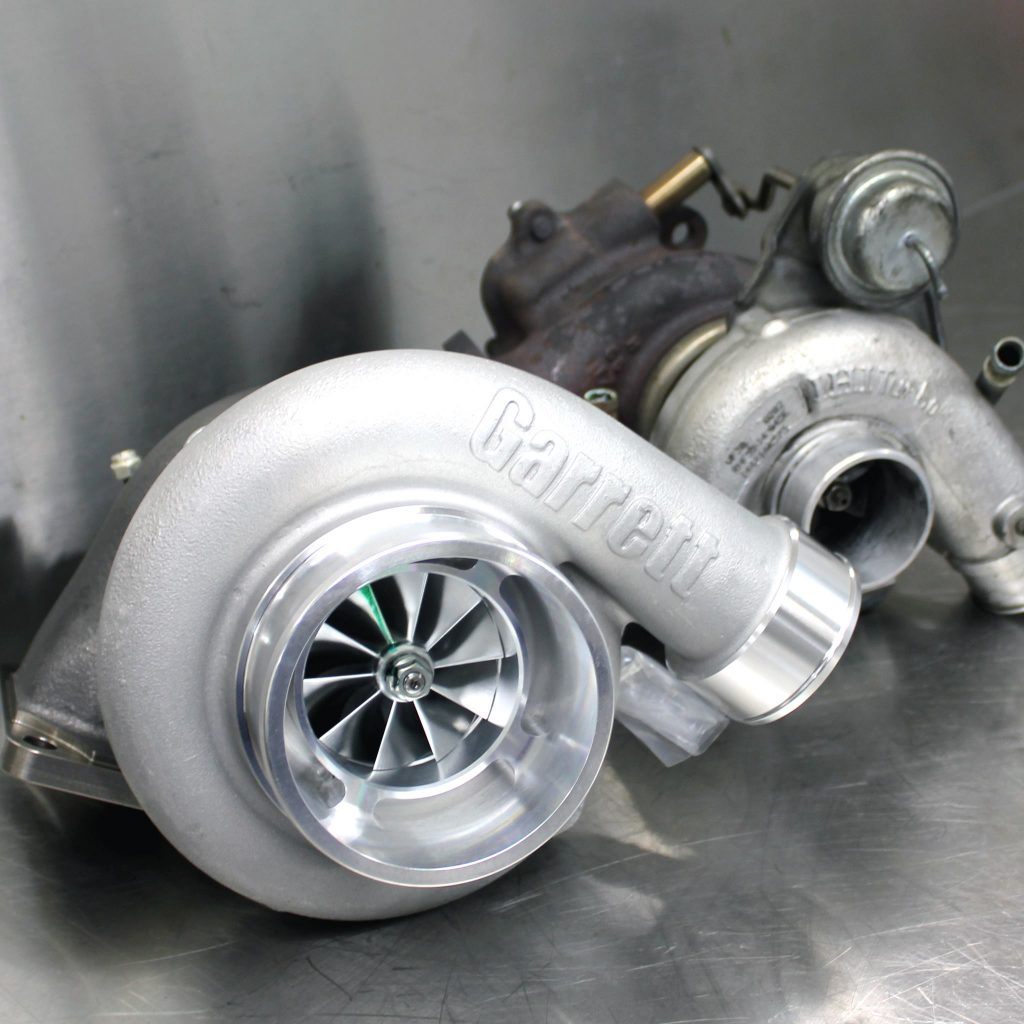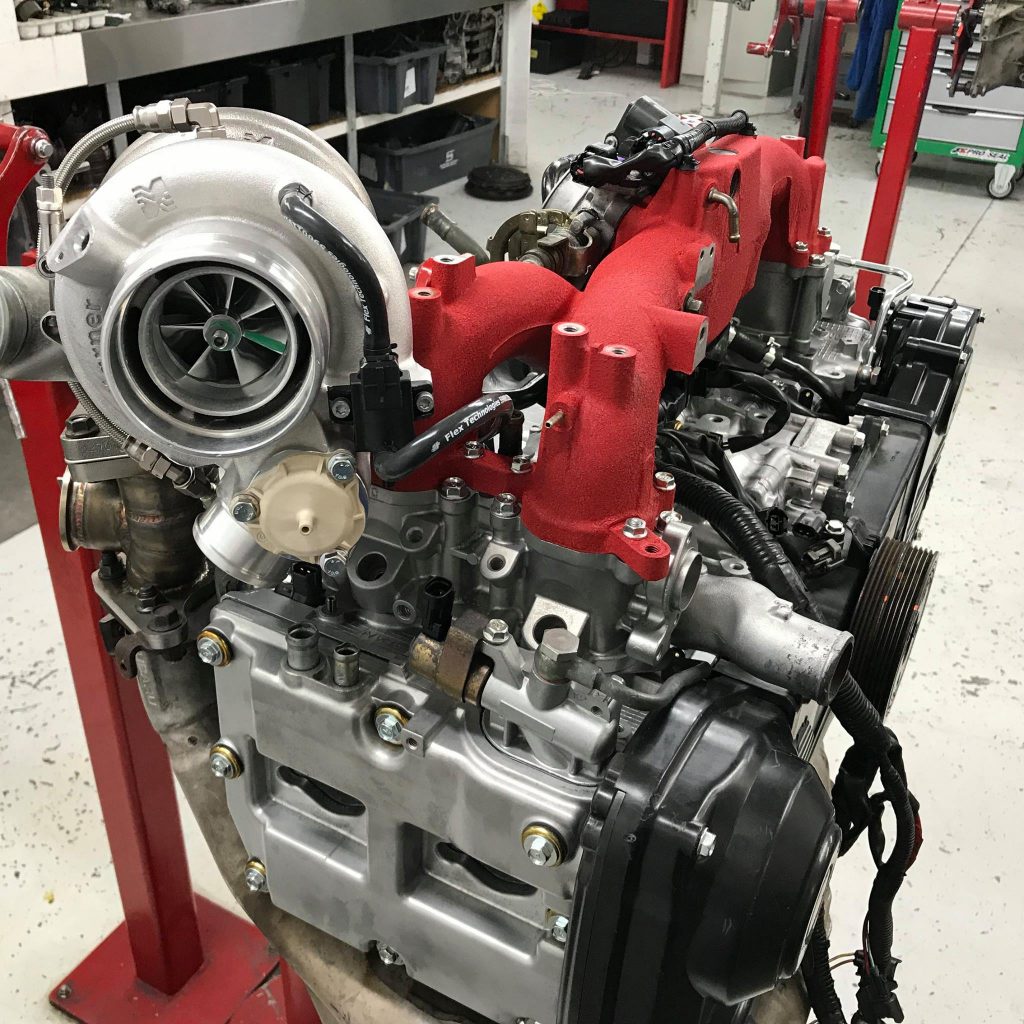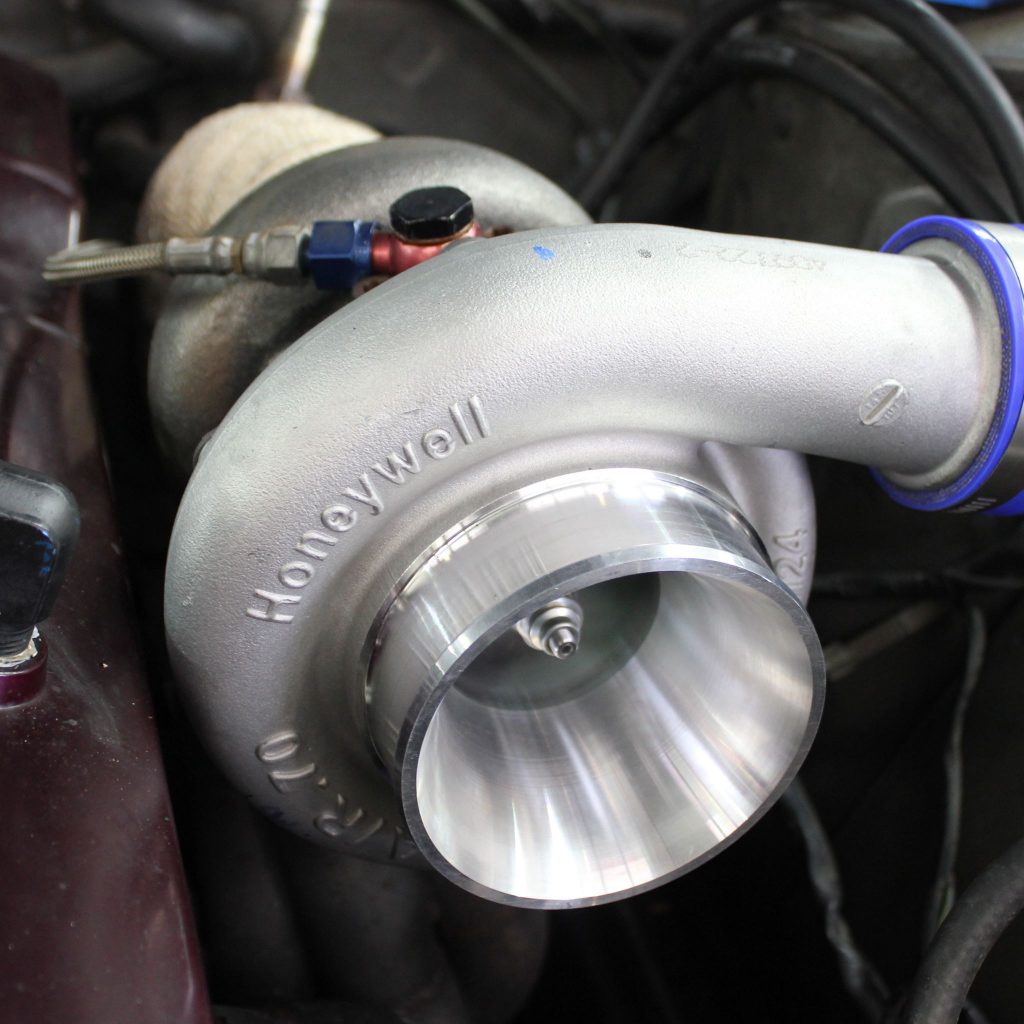Another frequently asked question we get - How much boost should I run?
Much like the question 'How far can I push my factory engine?', This isn't a completely straight forward answer. There are plenty of variables to consider.
Before we start, what is boost and why would I want to run more of it?
Boost is positive pressure created by a turbo or supercharger. It forces more air into the engine. This can be matched with more fuel, to create a bigger bang inside the cylinders - resulting in more power. Increasing boost (within reason) will force more air into the engine, so more fuel can be added to increase the power. So in general, if you add more boost and have an engine tuned to suit will give you more power. Too much boost can cause turbo or engine failure.
Let's start by looking at the turbo
It's no secret, not all turbos are create equal. Some are large, some small, some designed for response, some economy, some for outright power. The main areas we'll look into are size, efficiency, type and condition.
- Size - In general, a large turbo size will produce more airflow at a lower boost level, but with more lag. The opposite is also true, with a smaller turbo needing to run a higher boost level to achieve a given airflow, but will have less turbo lag.
- Efficiency - A turbo is designed to work within an efficiency range relating to air-flow and boost pressure. This is where the turbo will best produce a volume of air, without over speeding or producing excessive heat. Efficiency and size need to be considered as a part of the entire package when planning an engine setup.
- Type - Different types of turbos are designed for different applications with different features and limiting factors. We recommend investigating the limitations of your turbo. For example; a range of early Japanese vehicles were equiped with ceramic turbine wheels and shafts. These are typically fragile and only capable of mild boost pressures whilst remaining in one piece.
- Condition - A turbo in good usable condition is critical to producing reliable boost. Running the turbo within it's operating range, maintaining good oil pressure, adequate cooling and having an efficient setup will help turbo life. Even though we love the look of an open turbo intake, a filter is a great idea too!

Garrett GTX3582R side next to a stock STI turbo[/caption]
What about the engine itself?
Whilst more boost pressure generally means more power, it means more cylinder pressure and more engine stress. For a turbo to run a specific boost level, the engine must be able to handle it.
- Condition - as outlined in our specific engine article, the condition of an engine and its supporting components is just as important in running a power level as the turbo itself.
- Strength - The engine must be up-to the task of supporting the torque/power of a boost level. We recommend discussing this with an experienced tuner.
- Efficiency - Like a turbo, the engine will be efficient within a specific operating range. This will be dictated by the modifications to the internals or lack thereof. If you have a highly restrictive engine, this will limit the boost you can run, or mean that increasing the boost level has no positive impact on power. This gives you more stress with no upside. The opposite would be having an engine that is modified for high-efficiency and flow with a small turbo. It will potentially make the most power you can produce from that turbo, however the engine will out-flow the turbo. Ideally the engine and turbo setup will be matched to suit the vehicle requirements.

And the key turbo/turbo supporting components?
There are other components to consider when increasing the boost. If looking for a significant increase in boost or power, there will be a host of modifications required.
- Fuel system - The fuel system needs to support the power level your increase in boost will produce. This can include the fuel pump and fuel injectors, with a fuel pressure regulator and fuel lines needed if taking it to the next level.
- MAP sensor - The ECU (factory or aftermarket) will likely need to be fitted with a manifold absolute pressure (MAP) sensor that will read at least a few PSI high than you intend on running. The sensor needs to read above the desired boost level so the ECU can be programmed to have a boost cut to prevent over-boosting or any dangerous boost spikes.
- Intercooler and piping - When increasing boost, the charge (pressurised) air coming out of the turbo will increase in volume and temperature. This dictates that the intercooler will need to be able to dissipate this additional heat, otherwise it can limit the power level. The piping also needs to seal well so all of the pressurised air exiting the turbo actually enters the engine. Intercooler piping leaks are very, very common.
- Exhaust - In most cases, factory exhausts are a significant restriction in the turbo system. Modern vehicles also feature a catalytic convertor which acts like a filter in the exhaust flow, restricting flow even further. Fitment of a high flow exhaust (with a high-flow cat if applicable) will naturally increase the boost level a little, and allow boost to be increased even further if desired.
- Wastegate - This is the part of the turbo system that pneumatically controls the boost level. The wastegate setup typically consists of an actuator, valve, spring and solenoid. These all need to be spec'd to suit the desired boost level. This is setup dependant, so contact your tuner to discuss this.
How does PBMS tune for boost level?
First up, we do our research. We must know the exact turbo specifications and ensure we know if there are any limiting (or failing) boost level for the turbo. Once tuning on the dyno, we follow a simple procedure:
- Base run at wastegate pressure checking the boost level.
- Increase to boost level by 2-3 psi ,again checking boost level and ensuring desired control.
- Continue increasing the boost level in small increments and monitoring boost level and power increase. Once the boost level is at the desired level we stop, however if we don't know the desired level we go to the next step.
- Closely monitor power level compared to boost increasing. Typically we will see boost to provide diminishing power increases, until the point extra boost makes no or very little additional power. This indicates that we are likely beyond the efficiency of the engine and turbo setup. From here we can make an educated decision on what boost level to run.
Some actual recommendations please!
Most cases are a little different, however we can provide some general recommendations based on experience. The following boost levels are the most that we would typically tune to for good power, whilst retaining reasonable reliability. Please note that the engine must be tuned for safe and optimal running of an increased boost level.
- STI stock turbo (Version 3+) - 21-23psi (1.5 bar)
- Evo stock turbo (Evo V+) - 23-25psi (1.725 bar)
- R32 and R33 GTS-T (Stock ceramic turbo) - 12psi (0.83 bar)
- R32 and R33 GTR (Stock ceramic turbo) - 14psi (0.95 bar)
- WRX stock turbo (TD04 upto '07) - 15psi (1 bar)
- WRX/SG-T('08-'14)/Legacy ('04-'09) stock turbo - 18-20psi (1.35 bar)
- WRX/Levorg stock turbo ('14-current) - 18-20psi (1.35 bar)
- Mazda MPS/Mazda Speed stock turbo - 18-20psi (1.35 bar)

Garrett TA3410 fitted to a stock-block RB25DET producing 330kw at the wheels[/caption] Built engines and upgraded turbos open up a massive variety of other boost levels to be recommended. We're happy to discuss this with you when planning a build or preparing your vehicle for a PBMS tune package. Please contact us to discuss today.
